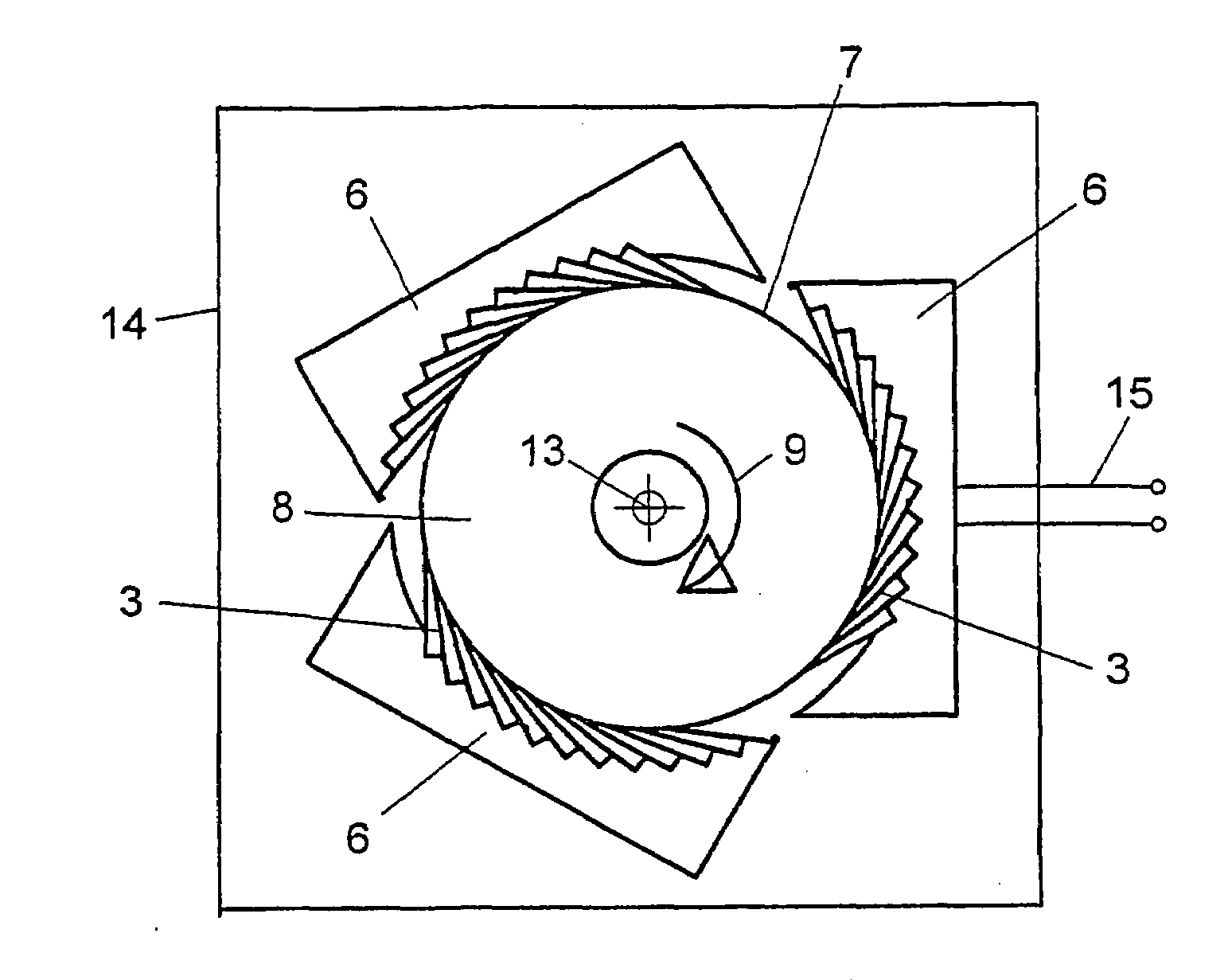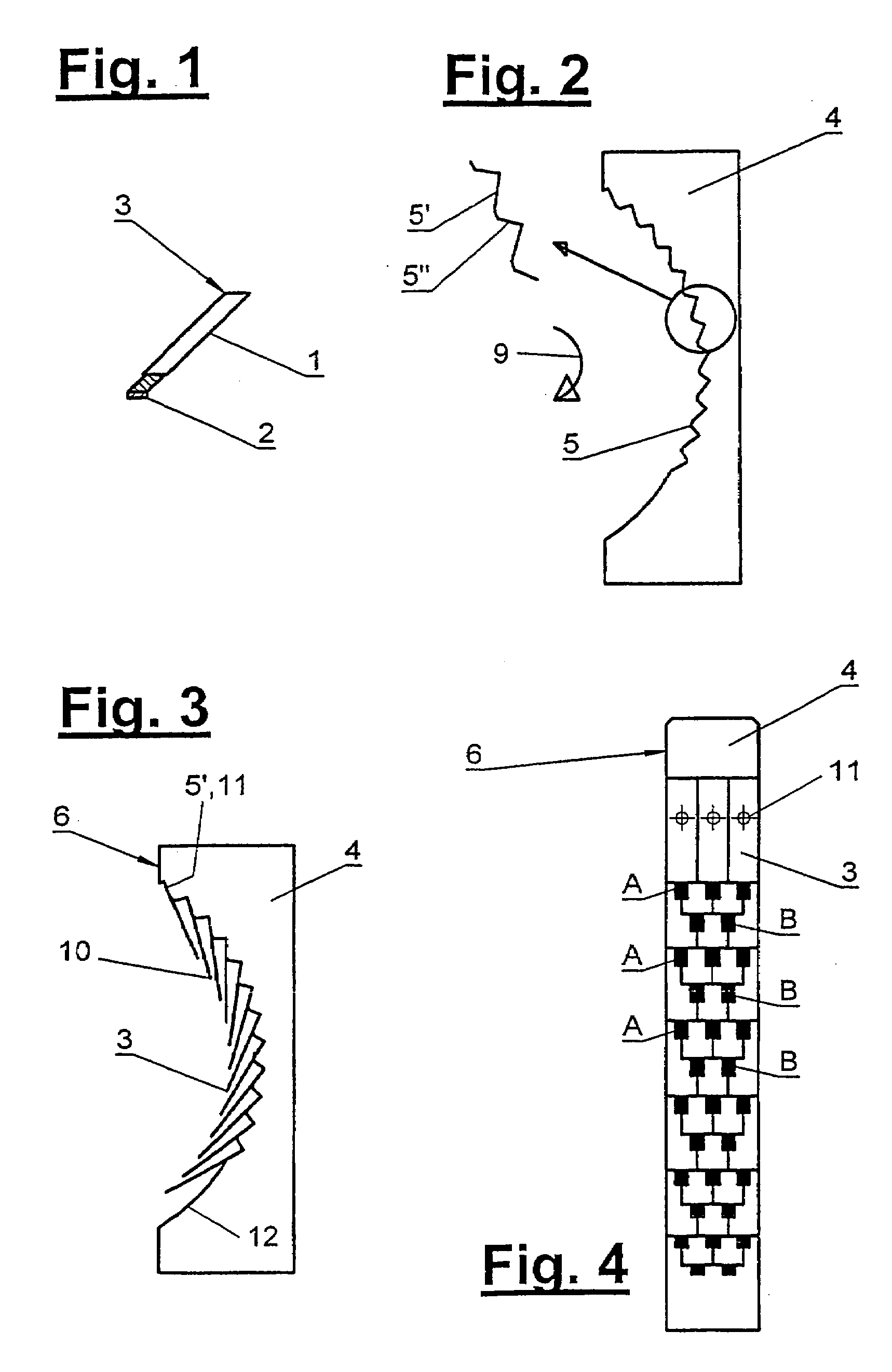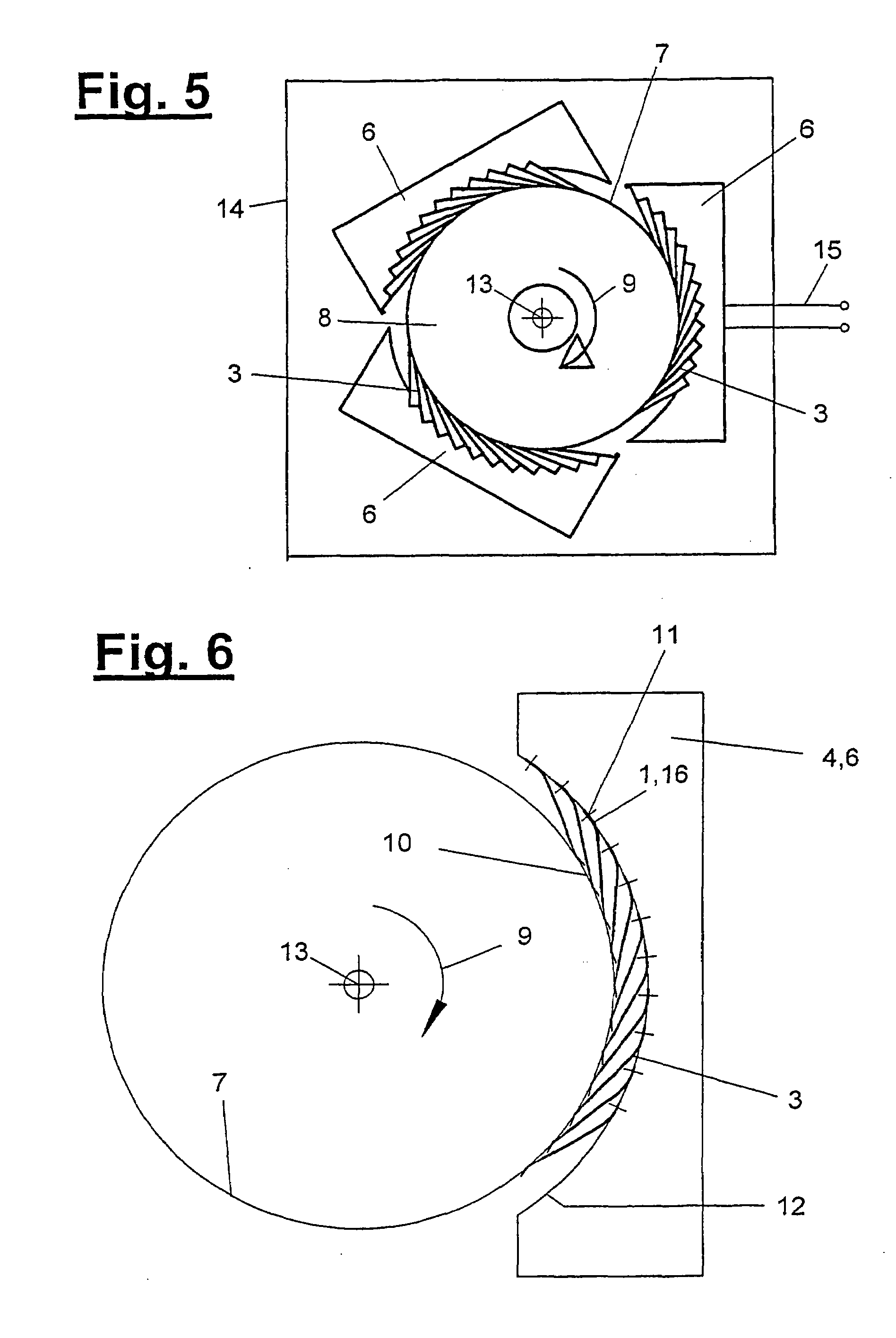Brush block for transmitting currents
a brush block and current technology, applied in current collectors, dynamo-electric machines, electrical apparatus, etc., can solve the problem of insufficient contact and achieve the effect of reducing contact resistance, reducing wear, and extending contact area
- Summary
- Abstract
- Description
- Claims
- Application Information
AI Technical Summary
Benefits of technology
Problems solved by technology
Method used
Image
Examples
Embodiment Construction
[0034]Referring to the drawings in particular, in a preferred embodiment of the present invention, the brush block generally designated 6 is used to transmit power currents to a slip ring 7, which is mounted on the circumferential side of a cylindrical carrier 8 rotating about the axis 13. The kinematic arrangement may also be reversed. The brush block 6, which is present as one brush block or as a plurality of brush blocks, and the one or more slip rings 7 arranged in parallel form a current transmission unit 14. FIG. 5 schematically shows a current transmission unit 14 with terminals 15 for power current, which are connected to the brush blocks 6. The slip ring or slip rings 7 has / have corresponding current connections.
[0035]The brush block 6 comprises a plurality of multiwire sliding elements 3 (hereinafter called MWSE), which are connected electrically in parallel and are arranged and fastened in a uniformly distributed pattern at an MWSE carrier 4 in the direction of sliding 9....
PUM
 Login to View More
Login to View More Abstract
Description
Claims
Application Information
 Login to View More
Login to View More - R&D
- Intellectual Property
- Life Sciences
- Materials
- Tech Scout
- Unparalleled Data Quality
- Higher Quality Content
- 60% Fewer Hallucinations
Browse by: Latest US Patents, China's latest patents, Technical Efficacy Thesaurus, Application Domain, Technology Topic, Popular Technical Reports.
© 2025 PatSnap. All rights reserved.Legal|Privacy policy|Modern Slavery Act Transparency Statement|Sitemap|About US| Contact US: help@patsnap.com



